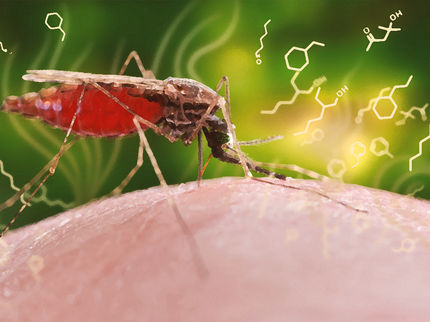The chemistry of mummification
Specific substances for certain parts of the body
Advertisement
A international team of researchers from LMU and University of Tübingen is unveiling the secrets of ancient Egyptian embalming. Vessels from a workshop in Saqqara are providing new insights into the substances that were used to preserve human bodies.

Symbolic image
Computer-generated image
Exactly 100 years ago, the tomb of Tutankhamun was discovered, complete with his world-famous mummy. Since then, researchers have learned a lot about how the ancient Egyptians prepared bodies for mummification. Until now, however, too little was known about how they ultimately made the bodies of the deceased immortal by embalming them. A German-Egyptian team of researchers has now been able to gain completely new insights into the chemistry of embalming. Their findings were published in Nature.
In collaboration with the National Research Center in Cairo, a team of researchers from LMU Munich and the University of Tübingen has analyzed chemical residues in vessels from an embalming workshop in Saqqara – not far from the pyramid of Unas – that was not discovered until 2016. “We were able to do all the scientific analyses ourselves in Egypt,” says LMU archeologist Philipp Stockhammer. And Maxime Rageot from the University of Tübingen adds: “For that we must thank Ramadan Hussein, who discovered and led the excavation for the DFG Saqqara Saite Tombs Projects, and who sadly died unexpectedly in the spring.”
In the newly discovered workshop, experts mummified the dead in the seventh and sixth century BC. For the Egyptologists, being able to recover numerous vessels used so long ago by skilled craftsmen was a tremendous stroke of luck. Better still, the vessels were labeled with their previous contents, and some even had instructions for use. “We have known the names of many of these embalming ingredients since ancient Egyptian writings were deciphered,” says Susanne Beck from the University of Tübingen, who is leading the excavation. “But until now, we could only guess at what substances were behind each name.”
Embalming – Specific substances for certain parts of the body
Analyzing the chemical residue in the vessels has now allowed the molecular remains of those substances that were once used in a given vessel to be isolated and identified. As the mystery unraveled, there were a number of surprises. Maxime Rageot, archeologist at the University of Tübingen and head of the analysis project, reveals one of them: “The substance labeled by the ancient Egyptians as antiu has long been translated as myrrh or frankincense. But we have now been able to show that it is actually a mixture of widely differing ingredients that we were able to pick apart with the aid of gas chromatography/mass spectrometry.” The antiu used in Saqqara was a blend of cedar oil, juniper/cypress oil and animal fats.
These insights facilitate a re-reading of familiar texts about ancient Egyptian embalming. Comparing the identified substances with the labels on the vessels has now, for the first time, enabled the team of researchers to determine exactly what substances were used to embalm certain parts of the body. Pistachio resin and castor oil, for example, were used only for the head. “What really surprised us was that the bulk of the substances used for embalming were not from Egypt itself. Some of them were imported from the Mediterranean region and even from tropical Africa and Southeast Asia,” says LMU archeologist Philipp Stockhammer, who funded the research with his ERC Starting Grant.
Besides pistachio resin, cedar oil and bitumen – all probably from the Levant – the researchers also found residues of dammar gum and elemi resin. These two substances in particular show how globalized trade relationships had already become nearly 3,000 years ago. While the resin of the elemi tree came to Egypt from tropical Africa or Southeast Asia, the dammar tree to this day still grows solely in tropical Southeast Asia. Tremendous effort thus evidently went into sourcing very specific chemical substances for the embalming process. “Ultimately, Egyptian mummification probably played an important role in the early emergence of global networks,” Rageot says. “Large quantities of these exotic resins were needed.” Stockhammer agrees: “Thanks to all the inscriptions on the vessels, we will in future be able to further decipher the vocabulary of ancient Egyptian chemistry that we did not sufficiently understand to date.”
Original publication
Maxime Rageot, Ramadan B. Hussein†, Susanne Beck, Victoria Altmann-Wendling, Mohammed I. M. Ibrahim, Mahmoud M. Bahgat, Ahmed M. Yousef, Katja Mittelstaedt, Jean-Jacques Filippi, Stephen Buckley, Cynthianne Spiteri, Philipp W. Stockhammer. Biomolecular analyses enable new insights into ancient Egyptian embalming. Nature, 2023





















































